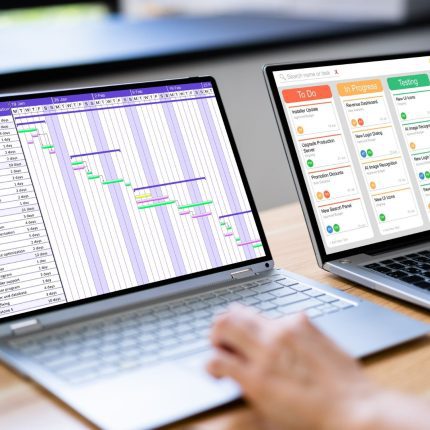
Project management for LSOs: it’s just like planning a… BBQ?!
With summer kicking off and Memorial Day weekend just around the corner, it’s time to embrace BBQ season! This provides the ideal use case to explain the role of Binocs as a project management tool. How? Well, planning a BBQ and managing complex projects share more in common than you might imagine. So come along for the ride as Mathias Lasoen explores the importance of demand visibility in project management—and barbecues!
Managing multiple projects simultaneously is no picnic. With each new project come more interdependencies, team constraints, and deadlines. This is where Binocs comes in, offering a unique approach to digital project management through a rule-based operating model that converts work packages into well-sequenced tasks, ready for execution.
But perhaps that’s a little abstract, so let’s start with an example.
Time to plan that first BBQ of the year!
Picture this: it’s Summer, there’s a 3-day weekend on the horizon, and your mouth is watering at the prospect of a perfect BBQ in the sun with friends and family. So let’s do it! Here’s the preliminary planning checklist:
- Finalize the guest list and send out invitations
- Clean the garden and the grill
- Source some high quality steaks, sausages, and burgers from the butcher
- Stock-up on drinks and other foodstuffs
- Double-check the weather forecast
- Locate the obligatory “Kiss the Cook” apron
- Ensure you can get feedback from guests afterwards
So, this list represents the critical tasks that need to be delivered—in the order they need to be delivered—in order to fulfill everyone’s expectations of a thoroughly successful inaugural BBQ of the season. In other words, this is the beginning of your operating model!
So is an operating model just a list?
Is it really that simple?
What if some of your guests are vegetarians? Or (gasp!) vegan? Well, then it’s probably wise to also buy some meat substitutes and extra vegetables.
What if the weather forecast is inconclsuive? It might be a safe bet to acquire and erect some temporary gazebos or a marquee to keep your guests protected from the elements.
At least 4 or 5 of the guests have kids, is there enough to keep them entertained? Should you perhaps foresee some entertainment, a bounce house or something like that..?
It’s clear, then, that the list of tasks required for a successful BBQ can grow quickly and will depend entirely on the circumstances: your guests’ requirements (the demand), the weather (the conditions), etc. Therefore, a fully-developed BBQ planning operating model needs to not only sequence the tasks approriately but to also be able to account for an array of decisions along the way; it needs to adapt according to changing conditions and follow different paths as required.
From demand to operating model
This is precisely why planning a BBQ is just like any other type of project management—it’s about ensuring that you can complete the relevant tasks in the correct order and make adjustments for different situations. Except that, in a complex life science organization, at any given moment there will be a multitude of “BBQs” all running simultaneously, each subject to a variety of different factors.
Here are a few examples of how a dynamic operating model can help to facilitate project planning in different types of life science setting:
- QC/QA: in this context, the starting point is the translation of a production plan into distinct and interconnected activities for the inspection, QC and QA teams, with specific details about the drug substance, molecule type, manufacturing process, production stage, etc., as additional inputs for the operating model that dictate the correct path to follow.
- Regulatory: here, an operating model can translate a list of regulatory submissions into a detailed sequence of high-level regulatory affairs tasks, such as strategy definition, clinical writing, CMC writing, paper publishing, eCTD publishing, etc. This list of submissions can be used to propose a default project plan, nuanced according to the specifics of different parameters, like product, region, type of variation, etc.
- Cell therapy operations: when an autologous therapy patient is donating their own cells for processing into a personalized therapy, an operating model can take patient batch list from your CRM or ERP and synchronize it into a comprehensive sequence of time-critical activities, ranging from reception to shipping while considering media, vector growth, etc.
So what project management tool delivers such operating models?
Effectively coordinating all those “BBQs” is extremely challenging. Most project management tools require you to manually define the activities for your BBQ or maybe provide some static templates to fill out that may or may not suit your needs.
The truth is that adapting your projects manually can not only be tedious but also risky: whenever you make a small change or you want to reorganize tasks in MS Project (for instance), you can often feel like you need to be an expert to fully grasp the consequences of your change before you commit.

How Binocs can revolutionize your workflow
Automated and integrated
Binocs offers a dynamic approach:
- Define your tasks: Identify the necessary tasks within a project or production batch, including their durations and sequences. This can even be directly imported from a pre-existing project management tool or production plan via our zero-code integration.
- Create your operating model: once set up, Binocs’ dynamic templates serve as a ‘translation engine’, automatically converting work packages into a series of demand lines, sequenced across different teams.
- Review your plan: as soon as a Binocs has received the relevant demand data, translated by the operating model, the native Gantt feature is immediately available. Providing a clear visual roadmap, this allows planners to focus on crucial questions: are the projected resources sufficient? Where are potential bottlenecks? Should we delay the project? What are the impacts?
Interactive Gantt charts
One of Binocs’ standout features is its interactive Gantt charts, which offer a visual representation of project timelines and dependencies. Imagine planning your BBQ with a Gantt chart: you can instantly see when each task (like ordering food or setting up gazebos) needs to be completed and how changes (like an unexpected rain forecast) will impact the overall plan. This visual tool, updated in real time, simplifies complex planning and makes it easier to manage multiple projects efficiently.

Clear demand visibility
As outlined, effective project management requires visibility—knowing what needs to be done, by whom, and when. Binocs enhances demand visibility by automatically translating your operating model into actionable tasks. This ensures everyone involved understands their responsibilities and deadlines, reducing errors and increasing the likelihood of successful project delivery.
Take, for example, a pharmaceutical company managing multiple QC/QA projects. Binocs helps translate production plans into detailed QC tasks, ensuring each step is properly sequenced and resourced. Regulatory teams can manage submission sequences and tasks, while cell therapy operations can sync patient batch lists with detailed activities.
Making Your Summer BBQ a Success
Just like planning a successful BBQ, managing complex projects requires a strategic approach. By leveraging Binocs’ operating model and interactive Gantt charts, you can ensure every task is accounted for, resources are optimized, and potential bottlenecks are addressed proactively.
So, as you fire up the grill this Summer, remember that the principles of effective BBQ planning can also apply to your professional projects. With Binocs, you’ll have the tools you need to achieve demand visibility and streamline project management—and ensure that every “BBQ” you plan is a success!
Are you ready to revolutionize your life science workflows with Binocs? We’ re happy to help! get in touch for a chat today!



